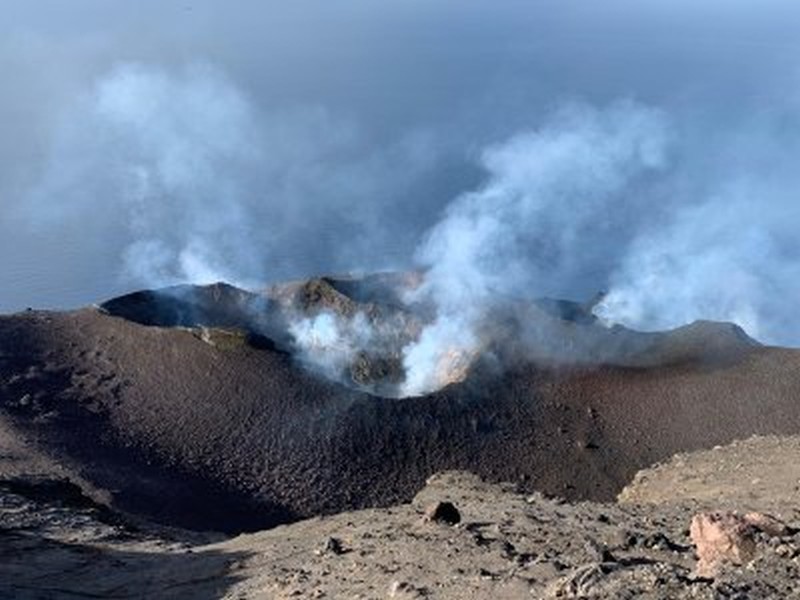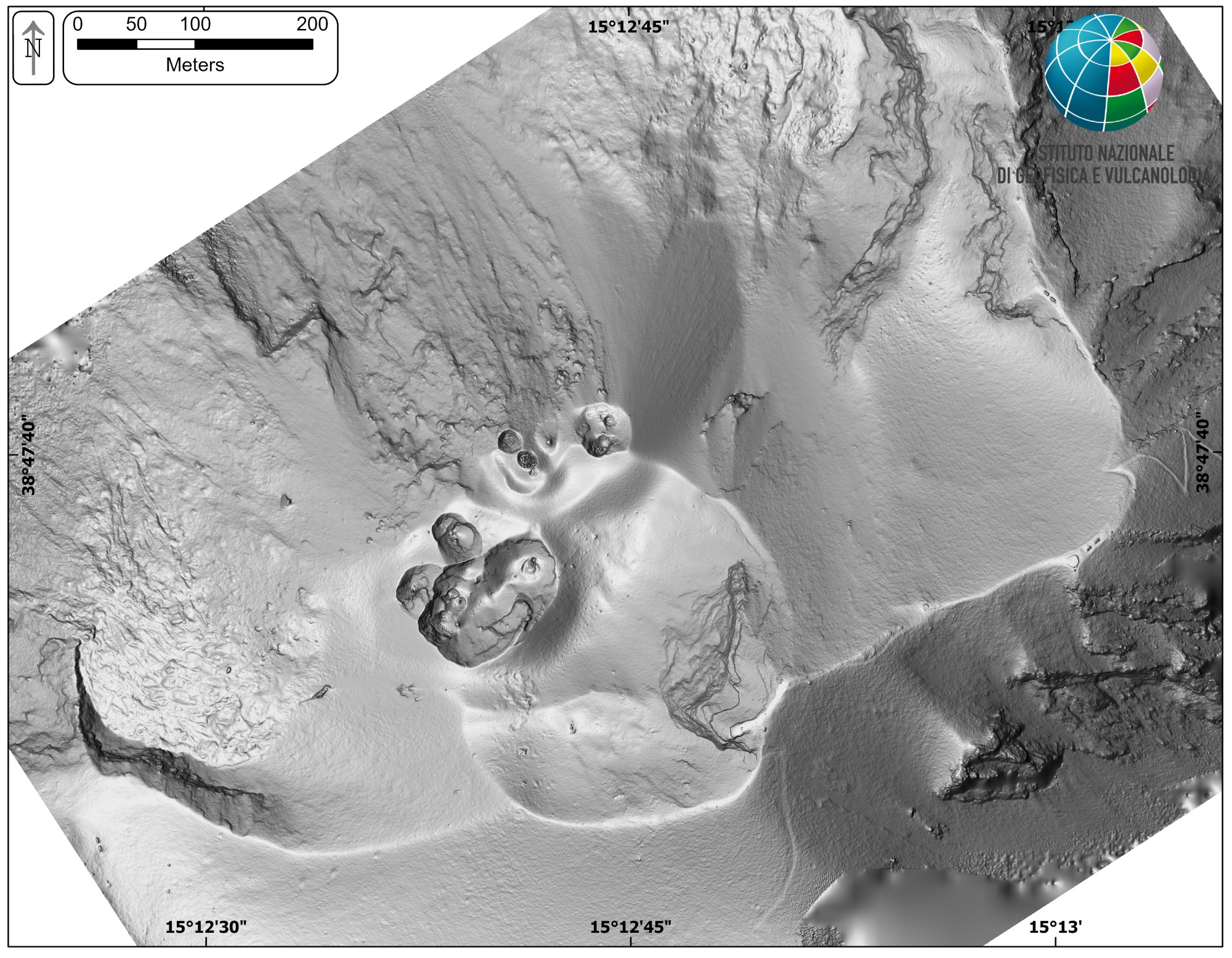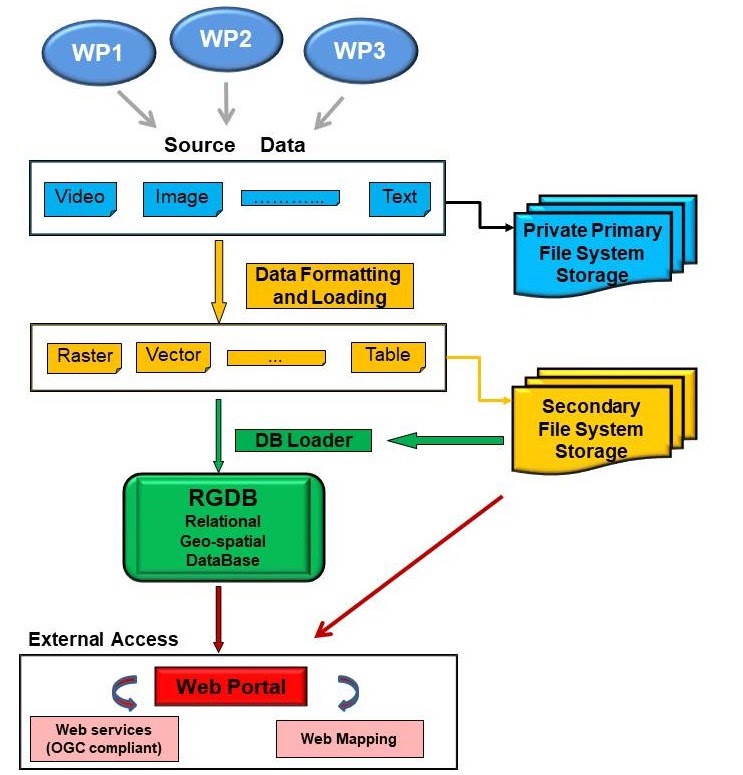WP1
Physical and chemical parameterization of the explosive activity
WP1a. physical parameterization through imaging
WP1b. Physical parameterization through acoustics
WP1c. Degassing parameterization through FTIR and UV imaging
WP1d. 3D numerical simulations of explosive eruptions at Stromboli: from parametrization back to observation
To investigate explosion dynamics, we will: 1) intensify multiparametric field campaigns and develop a semi-automatic imaging system for longer continuous recording; 2) deploy a new set of infrasonic and audible microphones, linked to and implementing the existing geophysical monitoring network; 3) deploy ultrasonic sensor that may reveal changes in gas release, overpressure generation, and changes in the rheological/mechanical properties of the rocks in the crater area; 4) study the chemical composition of magmatic gases between and during explosions by OP-FTIR spectrometry and new, high-speed UV cameras. These new multiparametric investigations will increase the chances to capture transitions between eruptive styles and energy and provide a more robust database for cross-correlating different parameters. Observational data will feed multiphase flow models that will allow studying possible expected explosive scenarios.
WP2
Textural and petrochemical studies of the eruption products (D. Andronico)
WP2a. Ash sampling strategies
WP2b. Ash-leachates as a proxy for gas plume composition
WP2c Micro-textural and chemical monitoring of eruptive products
Three aspects of eruptive products will be investigated: 1) morphological and textural analyses (e.g., shape and crystals and bubble content), 2) soluble S-, Cl-, F-bearing salts adhering to ash surfaces, and 3) micro-textural and chemical analyses on glasses and minerals to understand the evolution of the shallow plumbing system in terms of short-term variations of magma features (e.g., chemistry, mixing, mingling, volatiles content). These combined investigations will be used to study syn-eruptive magma variations within the conduit and fragmentation and to identify key textural or chemical variations in time that can be useful indicators of a departure from the ordinary activity state to potentially hazardous events. A frequent collection of the erupted products is pivotal to resolve short time scale variation of the processes leading to violent explosions and to define different levels of the ordinary activity.
WP3
Morphological changes and remote observation of volcanic activity (T. Ricci)
WP3a. Panchromatic and Multispectral Satellite data
WP3b. Airborne LiDAR data
WP3c. UAVs
WP3d. 3D numerical simulations of ballistic trajectories at Stromboli
Morphological changes of the crater terrace and on the Sciara del Fuoco following primary (lava flows, fall out deposits, pyroclastic flows) or secondary processes (gravitational instabilities, subsidence, lahars) will be quantified several times per year producing digital topographic models at large spatial and temporal scales and covering the entire area of interest. We will apply three remote sensing technologies that, properly integrated or combined, will allow systematic investigations on the volcanic environment and its changes through time: 1) Panchromatic and Multispectral Satellite acquisition in stereo-mode; 2) airborne LiDAR (Light and Detection Ranging); 3) UAVs-SfM (Unmanned Aerial Vehicles- Structure from Motion). The three techniques are complementary in their accuracy, precision, area coverage, and repetition rate, and together will detail changes at multiple scales. Morphological data and eruption parameters will initialize 3-D numerical models on the dispersion of ballistic bombs.
WP4
Data management plan (M. Bisson)
The multidisciplinary character of this project will be valued by the implementation of an interoperable database. Exploring the database with big data methods will allow discovering new links between eruptive processes, magma properties and volcano morphology, and also identifying the most promising precursors to changes in activity styles. The results of this research will be key for future implementations of the monitoring system of Stromboli volcano.






